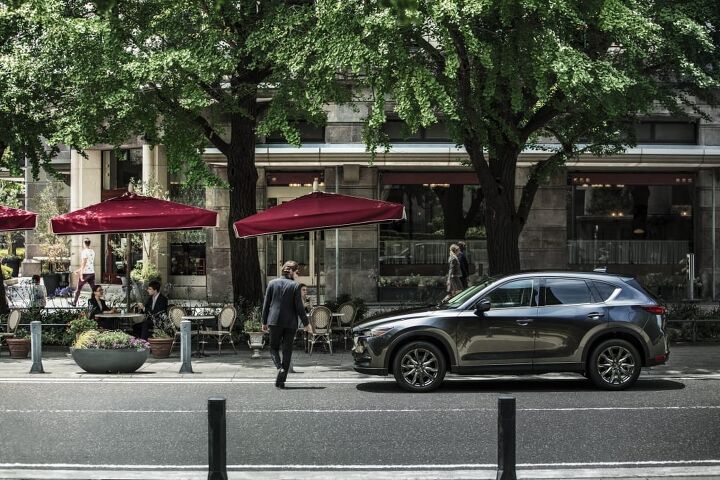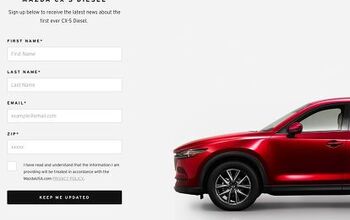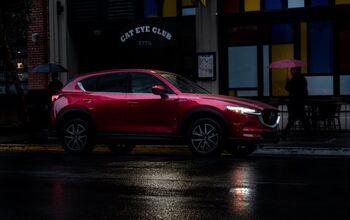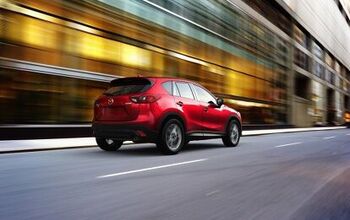The Mazda CX-5 Diesel's Economic Case Is Nonexistent
Finally.
Mazda’s promised diesel-powered CX-5 is now open for pre-order in the United States, years after we began chronicling the Skyactiv-D’s lethargic march to North America.
TTAC’s coverage of Mazda diesel delays goes back nearly six years, when the future of Mazda’s Skyactiv-D was linked to a future Mazda 6. It was a story that received more attention in 2014. Eventually, in late 2016, there was confirmation of a Mazda CX-5 diesel. Arrival date: second half of 2017.
By the second half of 2017, however, the timing of the diesel CX-5’s arrival was unknown. Fast forward past a promising NHTSA filing, then a CARB certification, and then the release of EPA fuel economy ratings to the 2019 New York International Auto Show.
The Mazda CX-5 Signature AWD Diesel is ready, Mazda insists. But at $42,045, there’s simply no reason for its existence in America.
Granted, it’s not the first time a vehicle’s diesel engine option required a hefty financial burden. Generally, automakers would demand greater financial outlay, but owners were reimbursed with a significant torque advantage and meaningful fuel savings.
The Mazda CX-5’s Signature line – heretofore available exclusively as an all-wheel-drive model with the 2.5-liter turbo seen first in the larger CX-9 – will conduct itself in a different manner. There’s a huge horsepower deficit, a quantifiable torque disadvantage, and a modest fuel economy benefit. Factor in the extra cost of diesel fuel and the potential cost savings at the pump dwindle further.
Here’s the simple math.
With 250 horsepower (220 on regular fuel) and 310 lb-ft of torque, the current Mazda CX-5 Signature is priced at $37,935, destination included. You’ll need to find another $4,110 to select the 2.2-liter diesel, which produces 82 fewer ponies and 20 fewer lb-ft of torque. In both cases, max. torque is achieved at 2,000 rpm.
The CX-5 Skyactiv-D will use less fuel than the Skyactiv-G 2.5T, but the official ratings are hardly soul-stirring. The diesel’s 28 mpg combined fuel economy rating is only 4 mpg better than that of the 2.5T.
Over the course of 10,000 miles, the diesel CX-5 will consume 357 gallons of fuel. According to AAA’s current national average diesel price of $3.08, the CX-5’s annual diesel cost will be $1,100.
The gas-fired CX-5 2.5T will require 417 gallons of fuel over the course of a 10,000-mile year. The average price of regular fuel, $2.84/gallon, produces an annual cost of $1,183; or $1,417 on $3.40/gallon premium fuel if you want to maximize CX-5 2.5T horsepower.
Assuming, improbably, no extra interest charges accompanying the $4,110 Skyactiv-D upcharge, the diesel costs $822 extra per year over the course of a 5-year payment plan. (Throw in around $60 extra for added interest costs at 2.9 percent, if you’d like.)
With $83 of annual fuel savings, it’ll take 49.5 years to recoup the Skyactiv-D’s upfront costs; 13 years at best.
Diesel fanatics aren’t unfamiliar with vaguely similar payback timelines. In the past, however, there were torque considerations to be, well, considered. There were resale value equations to calculate. But in the case of the Skyactiv-D, the diesel-like mid-range umph of the 2.5T squashes the torque argument, while the harm done to diesel’s reputation by Volkswagen’s TDI emissions scandal does little to bolster any residual value assertion.
Sometimes, good things come to those who wait.
Not this time.
At one point, Mazda suggested 10 percent of CX-5 shoppers would choose diesel, a figure that now does not seem remotely believable. Maybe the diesel Mazda 6 will tell a different tale?
[Images: Mazda]
Timothy Cain is a contributing analyst at The Truth About Cars and Driving.ca and the founder and former editor of GoodCarBadCar.net. Follow on Twitter @timcaincars and Instagram.
More by Timothy Cain
Latest Car Reviews
Read moreLatest Product Reviews
Read moreRecent Comments
- SCE to AUX Range only matters if you need more of it - just like towing capacity in trucks.I have a short-range EV and still manage to put 1000 miles/month on it, because the car is perfectly suited to my use case.There is no such thing as one-size-fits all with vehicles.
- Doug brockman There will be many many people living in apartments without dedicated charging facilities in future who will need personal vehicles to get to work and school and for whom mass transit will be an annoying inconvenience
- Jeff Self driving cars are not ready for prime time.
- Lichtronamo Watch as the non-us based automakers shift more production to Mexico in the future.
- 28-Cars-Later " Electrek recently dug around in Tesla’s online parts catalog and found that the windshield costs a whopping $1,900 to replace.To be fair, that’s around what a Mercedes S-Class or Rivian windshield costs, but the Tesla’s glass is unique because of its shape. It’s also worth noting that most insurance plans have glass replacement options that can make the repair a low- or zero-cost issue. "Now I understand why my insurance is so high despite no claims for years and about 7,500 annual miles between three cars.




































Comments
Join the conversation
What's the point of diesel in the passenger car? Turbocharged engine has all the torque advantage you need without complications and problems of diesel engine. And if thats not enough - get EV with all its torque from zero rpm. Diesel is better suited for commercial use.
The time to release a diesel CX-5 was back when diesels weren't quite as restricted and could easily hit 40mpg in a car this size.